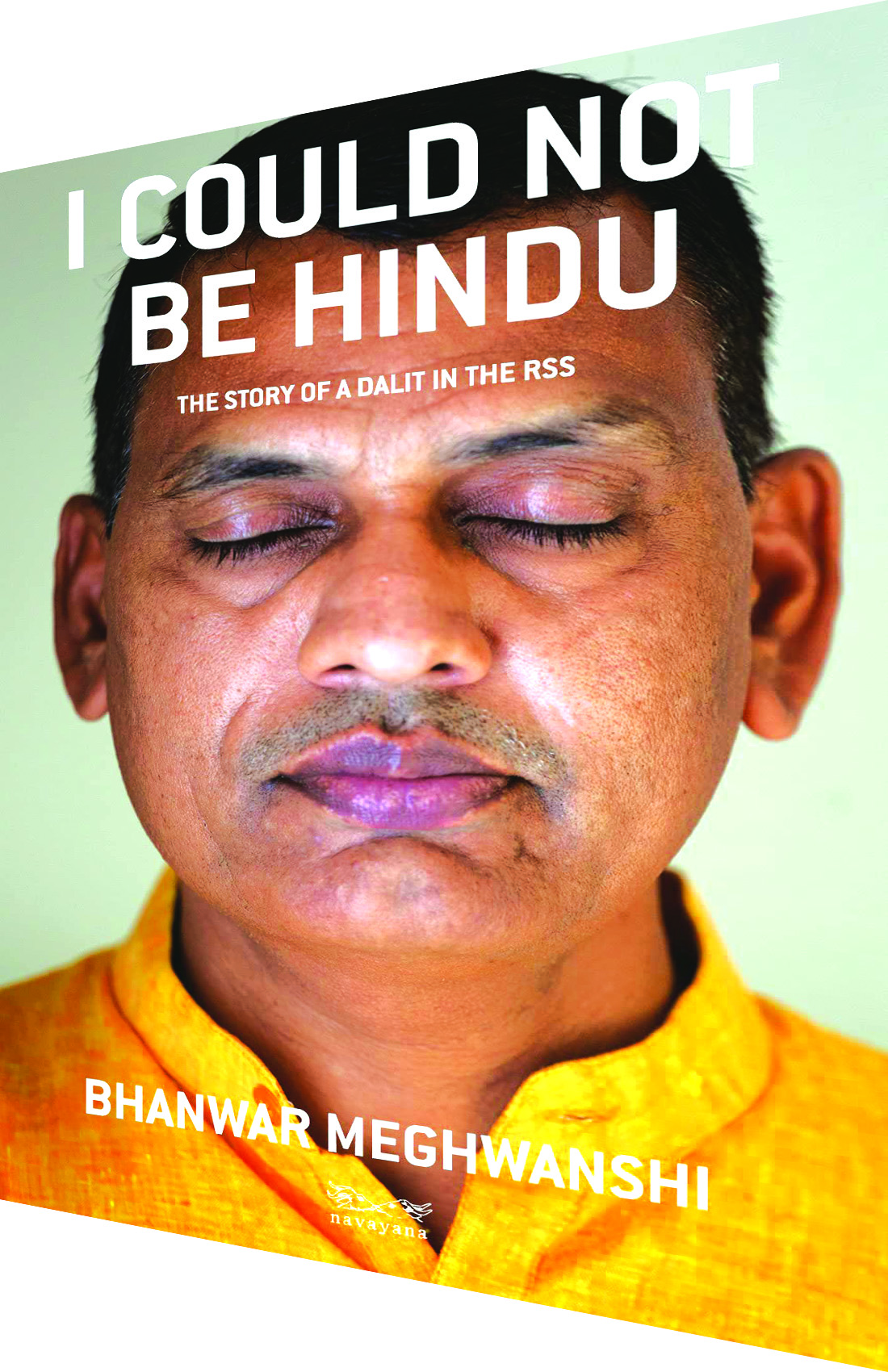I could not be Hindu: The story of a Dalit in the RSS
Bhanwar Meghwanshi
Navayana Publishing
Rs.399 Pages 240
The author shares his experience with the RSS and the reasons why he quit this organisation, the ideological mentor of the BJP, which rules at the Centre

This is an autobiography in which the author shares his experiences with the Rashtriya Swayamsevak Sangh (RSS) and the reasons he quit this organisation, the ideological mentor of the BJP which rules at the Centre and several states of the Indian Union.
Similar to Gandhi’s experiments with truth, where he identifies modernisation and westernisation as culprits of the degeneration of Indian civilisation, Bhanwar Meghwanshi highlights the hypocrisy and knouts of Brahmanism as the denominators of mass hypnotism, leading to rivalry, riots and toxic patriotism. He enlightens his readers about the situation of Dalits in the RSS and across the country.
According to the author, the RSS welcomes youth of different backgrounds and ensures superficial equality like wearing the same uniform or addressing each other with the suffix ji and bhai-sahab after the first name. However, this equality is cosmetic. A brainchild of Hedgewar, the RSS aims at creating a ‘Hindu Rashtra’ where Muslims, OBCs, SCs and STs are used as tropes to fight against each other in the guise of defusing Brahmanism, the moot agenda being protecting social hierarchies, i.e, uplifting the ethos of the existing caste system.
Meghwanshi’s testimony affirms the degrading caste-based exploitation perpetrated by the RSS. He joined the RSS at a tender age, where patriotism is evoked through exercises, hymns, anthems, learning weapons usage in the name of self-protection, distorting cultural history and always projecting Muslims as the national enemy. However, he also read Ambedkar’s original writings like Riddles in Hinduism; Annihilation of Caste, and writes: “Ambedkar’s writings sowed the seed of progressive thinking in me. A Dalit perspective helped me understand my personal, individual struggle against the sangh as a collective struggle for identity, social justice and dignity”.
Meghwanshi elaborates on the emotional and affective state of mind of Dalits, tribals and to some extent OBCs, who have historically been segregated, humiliated, ostracised and exploited. He notes that momentary socialisation within the shakhas, interaction of the swayamsevaks with pracharaks, as well as addressing each one with respect, appreciation of local-level activities, and most importantly, welcoming Dalits to voluntarily Sanskritise themselves thereby eliminating their original identity and emulating Brahmins, made them visualise a better life.
Meghwanshi refers to “weapons being stored in the basements of mosques”, and that demolishing Babri Masjid was similar to “a second battle for independence”. In the early 1990s, rescuing the imagined Hindu Nation gave him a sense of honour, pride and boosted his self-esteem. However, soon he started noticing the cracks and fissures underneath the community’s ostensible sense of solidarity. He served the RSS diligently till he reached the position of District Officer, but on expressing a wish to become a pracharak, caste-based discrimination became a roadblock.
On another occasion of inter-dining among members of the sangh parivar, Meghwanshi was refused by upper-caste pracharaks to eat with them. He faced psychological tremors, betrayal and dejection, resulting in a suicide attempt.
The author’s objectives in life can be understood in terms of revenge against the RSS by exposing their hypocrisy and exploitation, and fighting against Hindutva (by opposing Brahminical Hinduism and promoting secularism). To achieve his goals, he associated himself with radical journalism, set up his own organisations and publications, and also participated in secular movements, like the Mazdoor Kisan Shakti Sangathan — which advocated the need for a Right to Information Act.
He also asserted public places as sites of rebellion against caste discrimination. He engaged in several temple entry satyagrahas while cautioning his readers that the temple entry movement must not be understood as an attempt at Hinduisation but as an attempt to break the myth of harmony across castes.
His protests and revolts resulted in pressure and intimidation, and harassment of his family members. He writes, “Members of my family faced life-threatening physical attacks, false cases were slapped on me, cooked up complaints led to probes. The police, CID, CBI, IB, all carried out multiple investigations. These forms of extreme harassment carry on till today”.
This challenging attitude in the author’s political orientation, his fight against all odds towards an egalitarian society and his action-oriented struggle/call for justice are the strengths of the book. This is an indispensable read for academics and lay people who are inquisitive about the Hindu Rashtra but seek an honest opinion based on empirical evidence. The author brings micro ground-level experiences and organisational blueprints of the RSS. His touching account exposes how Dalits are exploited as mere foot soldiers in the political act of fomenting communal disharmony under the strategic guidance of the RSS.
Kanchan Biswas (The Book Review)




























